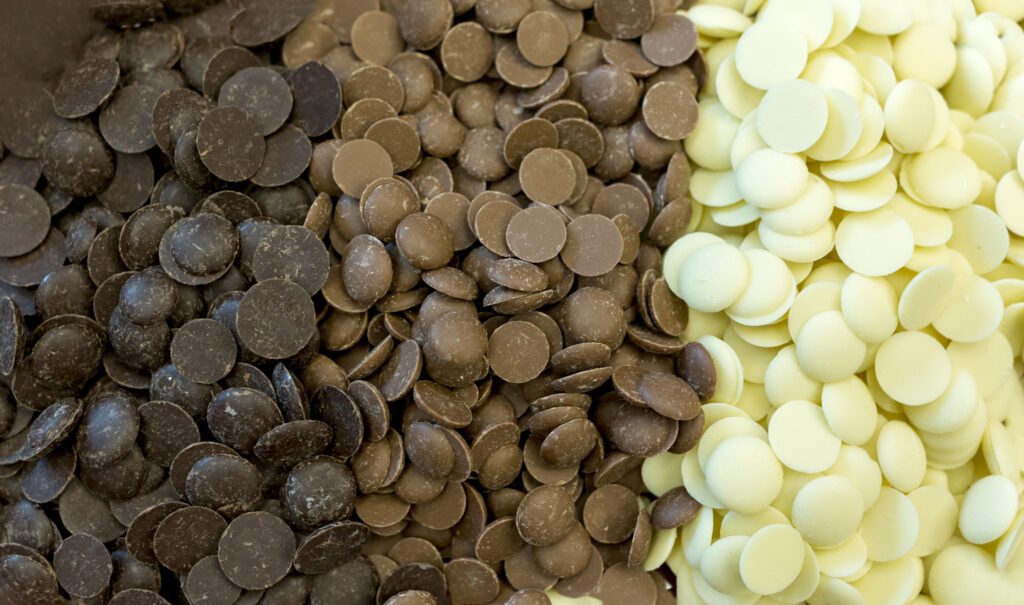Think you love chocolate? You’ve got nothing on Montezuma II, the Aztec emperor who drank 50 cups of liquid chocolate every day.
And when we say “liquid chocolate,” we don’t mean hot cocoa. The emperor’s preferred drink was a hot, spicy and bitter concoction.
Chocolate has undergone a lot of changes over the centuries. Instead of a liquid, we mostly consume it in its solid form. And we have our preferences: milk, dark, white. Today we’re going to look at the differences between those three varieties, allowing you to be better informed the next time you visit your Bucks County chocolate shop.
Dark chocolate
All chocolates contain some level of cocoa, an ingredient that comes from the beans of the cocoa tree. Those beans are fermented, roasted and ground to make chocolate.
Dark chocolate typically contains anywhere from 45 to 80 percent cocoa, giving it its dark brown color. Also known as “semisweet,” it has a deep, if somewhat bitter, flavor. Dark chocolate is also considered the healthy chocolate. It’s a powerful antioxidant, and has been shown to improve circulation and heart health, and lower your risk for strokes.
Milk chocolate
Like the name suggests, milk chocolate must contain milks (four percent milk fats and 12 percent milk solids) along with cocoa butter, chocolate liquor, vanilla and a stabilizing ingredient known as lecithin.
It has much less cocoa than dark chocolate – only about five to seven percent – and will therefore have a lighter appearance, creamier texture, and sweeter taste.
White chocolate
The term “white chocolate” is a misnomer, as it’s technically not real chocolate. While it contains many of the same ingredients as milk chocolate – milks, sugar, lecithin and cocoa butter – it contains no chocolate solids (cocoa powder).
Nestle claims to have created white chocolate in the 1930s as a way of using up excess cocoa butter. The company’s Alpine White bar was the first white chocolate candy bar mass-marketed in the U.S.
How should chocolate taste?
The quality of your chocolate can have a major impact on how it tastes, writes Alissa Fleck in the San Francisco Chronicle.
“Products manufactured by large commercial companies are intended to last a long time and be relatively inexpensive for buyers,” she writes.
Thus, cheaper milk chocolate will taste waxy, while low-quality dark chocolate can have a harsh flavor. Smaller, independent chocolate makers tend to aim for a more sophisticated taste.
If you’re searching for a chocolate that has a more refined flavor, visit Stutz. Our Bucks County chocolate shop has been in the business of producing handmade candy since the 1930s.
Whether you’re looking for dark, milk or white chocolate, we have something to make your sweet tooth happy. Visit us online or at one of our Bucks County Chocolate shops to taste for yourself.

One thought on “What’s the Difference Between Dark, Milk & White Chocolate?”
Comments are closed.